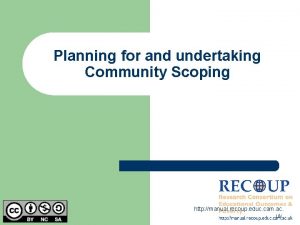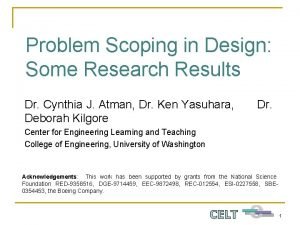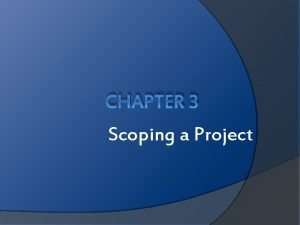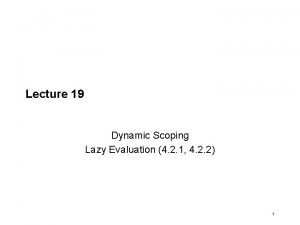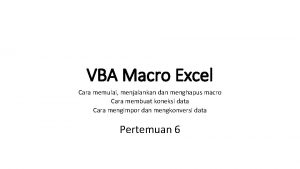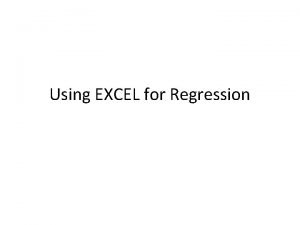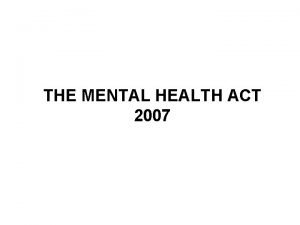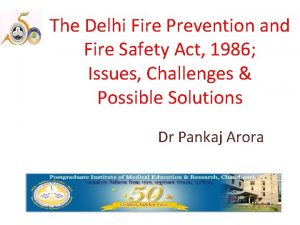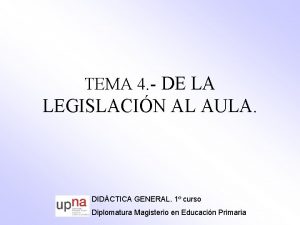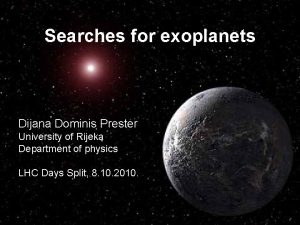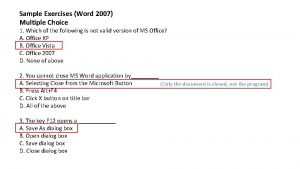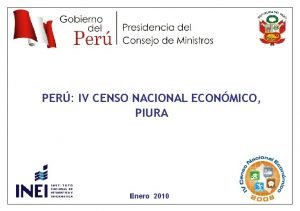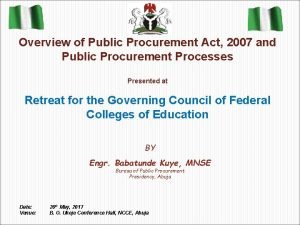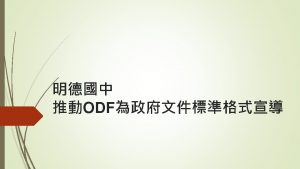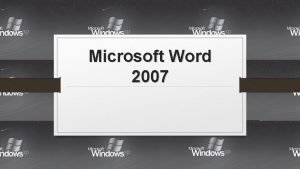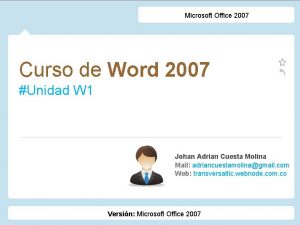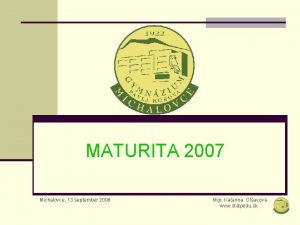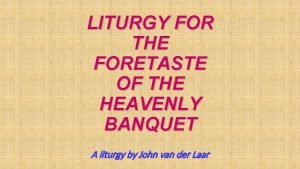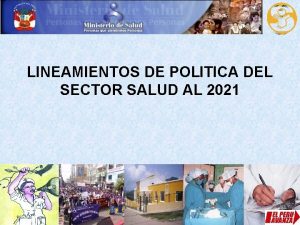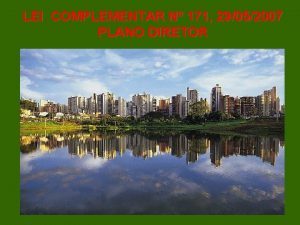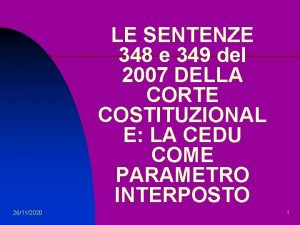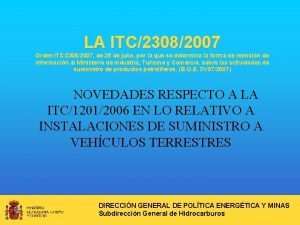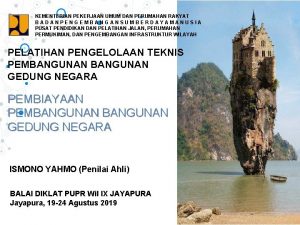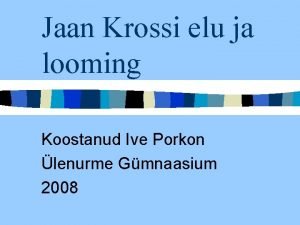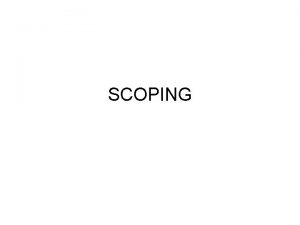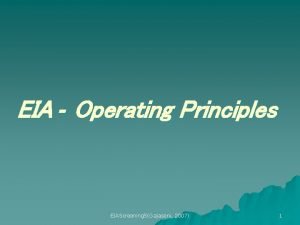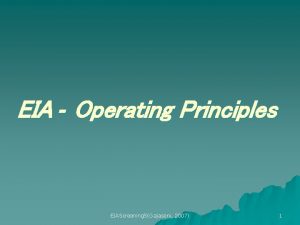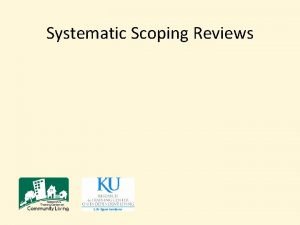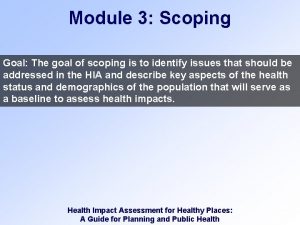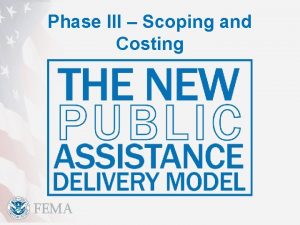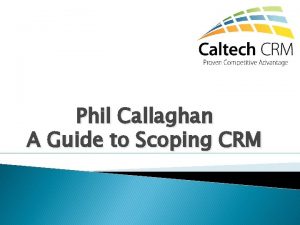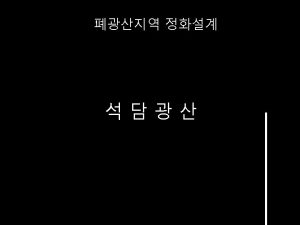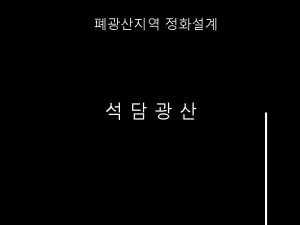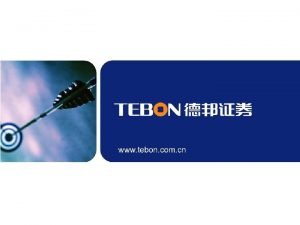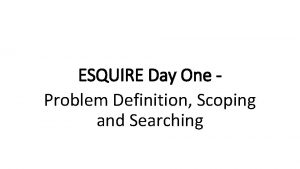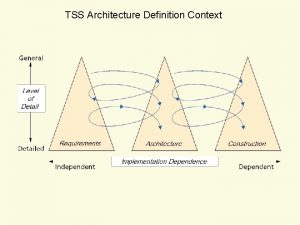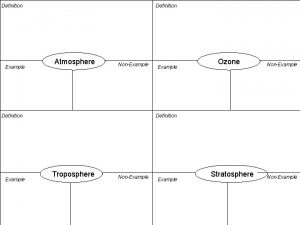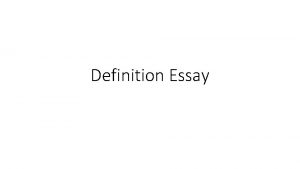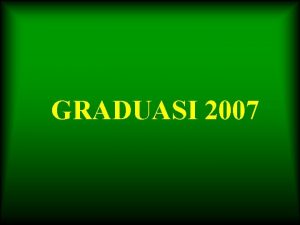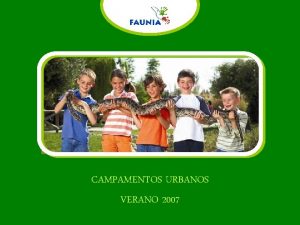II Scoping EIAScreening 6Gajaseni 2007 1 Scoping Definition































- Slides: 31

II. Scoping EIAScreening 6(Gajaseni, 2007) 1

Scoping Definition: is a process of interaction between the interested public, government agencies and proponents. EIAScreening 6(Gajaseni, 2007) 2

Scoping · early step – begins once screening completed F open, F lays interactive process – involves the public the foundation of an EIA – by identifying - boundaries of the EIA study - the information necessary for decision-making - key issues and significant impacts to be considered EIAScreening 6(Gajaseni, 2007) 3

Key objectives of scoping F find out their concerns F inform and identify stakeholders F consider F identify F define feasible and practical alternatives the main issues and impacts to be studied the boundaries of the EIA study F agree on means of public involvement and methods of analysis F establish the Terms of Reference EIAScreening 6(Gajaseni, 2007) 4

Steps in the scoping process F prepare an outline scope F F F F develop the outline through informal consultation make the outline available compile the range of concerns (long list) evaluate these to establish key issues (short list) organise these into impact categories (study list) amend the outline to incorporate the above information develop Terms of Reference monitor progress against them, revising as necessary EIAScreening 6(Gajaseni, 2007) 5

Whose responsibility will do scoping? Scoping should be undertaken – by proponent, who will pay all the costs of EIA study. – Or by EIA agency – Or by expert group set up for the purpose EIAScreening 6(Gajaseni, 2007) 6

Who should be involved in scoping? Fthe proponent Fthe competent authority Fthe EIA administering body Fother responsible agencies FEIA practitioners and experts Fkey stakeholders (e. g. those affected by the proposal) Fthe wider community EIAScreening 6(Gajaseni, 2007) 7

Stakeholders involve in scoping as a minimum: National government misnistries Local government bodies Traditional decision-making bodies (councils etc. ) Private sector organisations NGOs Representatives of the public EIAScreening 6(Gajaseni, 2007) 8

Scoping refers to the process of identifying: the appropriate boundaries of an EIA study the important issues and concerns the information necessary for decision-making the significant effects and factors to be considered EIAScreening 6(Gajaseni, 2007) 9

Scoping is applied to: identify community and scientific concerns about a proposed or action evaluate and determine the key issues for the purpose of EIA eliminate insignificant issues organise and communicate these to assist in the analysis of issues and ultimate making of decision EIAScreening 6(Gajaseni, 2007) 10

Techniques and procedures for screening and scoping have marked similarities. The information resulting from screening will often provide the basis for scoping. EIAScreening 6(Gajaseni, 2007) 11

Scoping is considered to be completed when a Terms of Reference (TOR) is produced setting out. Generally, TOR should not be rigid documents. – They need to be flexible enough to either increase or decrease the scope of investigations as new issues emerge or others are reduced importance. – TOR for EIA should be based on the results of scoping activities. EIAScreening 6(Gajaseni, 2007) 12

Term of Reference )TOR( EIAScreening 6(Gajaseni, 2007) 13

Main components of TOR: background to the proposal setting the context for the problem alternatives (to the project, within project) institution and public involvement required information and data – project description – description of environment – quality of information EIAScreening 6(Gajaseni, 2007) 14

analysis of impacts – positive/negative – natural resources – human resources – relocation and compensation – cumulative impacts – transboundary impacts – impact significant EIAScreening 6(Gajaseni, 2007) 15

mitigation and monitoring conclusion and recommendation – project decision – technical matters – non-technical summary EIAScreening 6(Gajaseni, 2007) 16

TOR can contain such as: the proposed study schedule the budget allowed for the study the expected outputs – interim and final reports – format of the environmental impact statement – number of copies the basis on which variation to the brief will be negotiated EIAScreening 6(Gajaseni, 2007) 17

Who can approve To. R? Environmental agency may have one/more than one roles in EIA. – Approval of To. R for EIA** – Implementation of stakeholders involvement – Issuing an environmental approval – Control over environmental management audit procedures EIAScreening 6(Gajaseni, 2007) 18

Purpose of setting TOR (Thailand) Is to stipulate the requirements for the EIS to be prepared by the agency or proponent proposing to undertaken the project. TOR may be set by ONEP or ONEB (the Office of the National Environment Board). EIAScreening 6(Gajaseni, 2007) 19

Scoping can be used: consider reasonable and practical alternatives inform potentially affected people of the proposal and the alternatives identify the possible effects – on the environment of proposal and the alternatives – on people of predicted environmental changes EIAScreening 6(Gajaseni, 2007) 20

understand the values about the quality of the environment held by individuals and groups that might be affected by the proposal and the alternatives evaluate concerns expressed and the possible environmental effects for the purpose of determining how and whether to pursue them further define the boundaries of any required further assessment in time, space and subject matter EIAScreening 6(Gajaseni, 2007) 21

determine the nature of any required further assessment in terms of analytical methods and consultation procedures organise, focus and communicate the potential impacts and concerns, to assist further analysis and decision-making establish the TOR to be used as the basis of the ongoing assessment EIAScreening 6(Gajaseni, 2007) 22

Two possibility of setting up ‘SCOPING’: 1. Scoping may lie with the proponent, or with the EIA authority, or with an expert group set up for the purpose. 2. Scoping will be followed up the existing scoping documentation for a similar proposal, sectoral guidelines and checklists. EIAScreening 6(Gajaseni, 2007) 23

Review of the scope is: – a continuous activity that proceeds throughout the detailed EIA studies, the decision-making, detailed design, implementation and monitoring. EIAScreening 6(Gajaseni, 2007) 24

A typical list of steps for scoping is: 1. Prepare an outline of scoping, with heading such as: – objectives and description of the proposal – the context and setting of the proposal – constraints – alternatives – issues – public involvement (in scope) – timetable EIAScreening 6(Gajaseni, 2007) 25

2. Further develop the outline of the scope through discussion with the proponent, the EIA authority, and other key stakeholders, assembling available information, and identifying information gaps. 3. Make the outline and supporting information available to those whose views are to be obtained. EIAScreening 6(Gajaseni, 2007) 26

4. Identify the issues of concern. 5. Evaluate the concerns from both a technical and subjective perspective, seeking to assign priority to the more important issues. EIAScreening 6(Gajaseni, 2007) 27

6. Amend the outline to incorporate the agreed suggestions 7. Develop a strategy for addressing and resolving each key issue, including information requirements and terms of reference for further studies. 8. Provide feedback on the way comments have been incorporated. EIAScreening 6(Gajaseni, 2007) 28

Alternatives are related as: demand alternatives activity alternatives location alternatives process alternatives scheduling alternatives input alternatives EIAScreening 6(Gajaseni, 2007) 29

EIAScreening 6(Gajaseni, 2007) 30

Conclusion for good EIA practice Specific relevance to screening and scoping process; – focus on the main issues – involve the appropriate persons and groups – link information to decisions about the project – present clear options for the mitigation of impacts and for sound environmental management – provide information in a form useful to the decision-makers. EIAScreening 6(Gajaseni, 2007) 31
 How do you undertake community scoping
How do you undertake community scoping Problem scoping
Problem scoping Project scoping exercise
Project scoping exercise Project scoping
Project scoping Dynamic scoping
Dynamic scoping Ribbon untuk memulai vba excel adalah
Ribbon untuk memulai vba excel adalah Regression analysis excel 2007
Regression analysis excel 2007 The mental health act 2007 summary
The mental health act 2007 summary Delhi fire service act
Delhi fire service act Decreto foral 23/2007
Decreto foral 23/2007 Bulan ramadhan tahun 2007
Bulan ramadhan tahun 2007 Dijana dominis prester
Dijana dominis prester Exercises for microsoft word
Exercises for microsoft word Sale of goods and supply of services act 2007
Sale of goods and supply of services act 2007 June 2007 physics regents
June 2007 physics regents Powerpivot 自習書
Powerpivot 自習書 Inei censo 2007 resultados
Inei censo 2007 resultados Summary of public procurement act, 2007
Summary of public procurement act, 2007 Ods to excel
Ods to excel Microsoft word 2007 dapat dijalankan dengan menggunakan
Microsoft word 2007 dapat dijalankan dengan menggunakan Microsoft project 2007
Microsoft project 2007 Microsoft office visio 2007
Microsoft office visio 2007 Microsoft publisher 2007
Microsoft publisher 2007 Curso de word 2007
Curso de word 2007 Maturita 2007
Maturita 2007 Foretaste of spring 2007
Foretaste of spring 2007 Lineamientos de política en salud al 2021
Lineamientos de política en salud al 2021 Lei 171 de 2007
Lei 171 de 2007 Sentenze gemelle 348 e 349 del 2007
Sentenze gemelle 348 e 349 del 2007 Mityc risp
Mityc risp Harga satuan bangunan gedung negara (hsbgn) ta 2021
Harga satuan bangunan gedung negara (hsbgn) ta 2021 Krossi novellid
Krossi novellid
